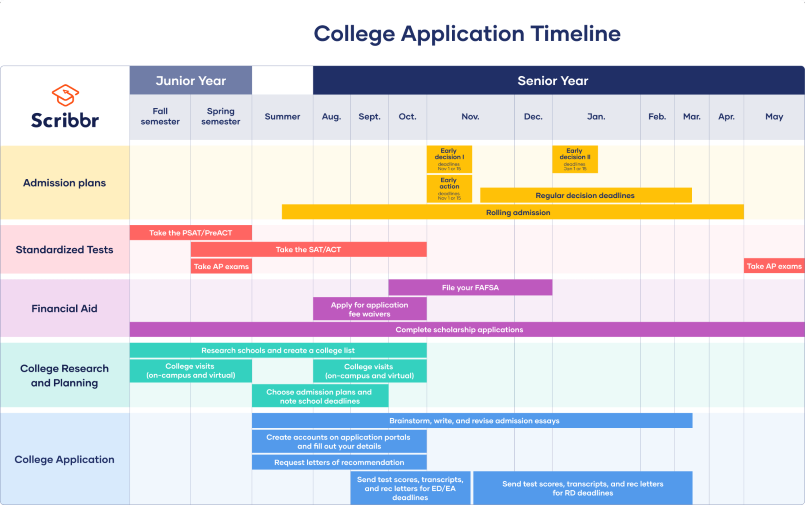It might seem like a lot to navigate when applying to college after high school, but applying to college can be intimidating, but it is a great step into the future! This avenue is far to go when students seek knowledge, for their career and personality development. The process generally includes researching schools, compiling transcripts and test scores, writing essays, and submitting applications.
Colleges seek more than grades from applicants. They are looking for well-rounded students who will add to their campus community. As such, it doesn’t merely consider grades, standardized test results, or even your score on the SAT — but also extracurricular activities, volunteer work and personal achievements, among other things.
A college degree provides access to new opportunities and experiences. It’s an opportunity for students to pursue their interests, meet new friends, and prepare for careers down the line. Though the application process can be stressful, it’s well worth it for many high school graduates who are looking to attend college.
Understanding the College Application Process
The college application process involves several key steps. Students need to research schools, gather materials, and submit applications on time. Planning helps make the process smoother.
Researching Potential Colleges
Create a list of schools that interest you. Check out their websites to find out about majors, campus life, and costs. If you can visit campuses, do so as you get a sense of the place. Interview current students or alumni about their experiences.
You can use online tools to begin comparing schools by factors such as their location, size, and programs offered. Keep a record of each school’s admission requirements and deadlines. Applying: Finding Job Listings and Doing Your Research
Talk to your guidance counselor. They can recommend schools that might be a good match for your priorities and skills.

Preparing Your Application Materials
Gather important documents early. Most colleges require:
- High school transcripts
- Standardized test scores (SAT or ACT)
- Letters of recommendation
- Personal essay
Request transcripts from your high school. Allow time for processing. Register for and take required tests well before application deadlines.
Ask teachers or mentors for recommendation letters several weeks in advance. Give them info about your achievements to include.
Start your essay early. Brainstorm topics and write multiple drafts. Have others review it for feedback.
Getting Application Deadlines
Make a timeline of key dates. Deadlines differ by school. Here are some popular ones:
- Early Action
- Early Decision
- Regular Decision
- Rolling Admission
Put it in your calendar. Establish personal deadlines ahead of the actual due dates. This allows you to remedy problems.
Submit applications and materials well in advance of deadlines. Most schools utilize online platforms such as the Common App. Be familiar with using these platforms.
Verify that all components of your application are finished. Check back to make sure schools get everything they need.
Financial Planning for College
Getting ready for college means thinking about money. There are many ways to pay for school. Students can look for free money and fill out forms to get help.
Exploring Scholarships and Grants
Scholarships and grants are free money for college. Students don’t have to pay them back. Many schools, groups, and companies offer scholarships. Grades, sports, or special skills can help win scholarships. Grants often look at a student’s money needs. The government gives out many grants.
Students should start looking for scholarships early. They can ask their school counselor for help. There are also websites that list many scholarships. It’s smart to apply for lots of scholarships, even small ones. The money can add up.
Filling Out Financial Aid Forms
The primary form for college money is the FAFSA. FAFSA stands for Free Application for Federal Student Aid. Students fill it out online. It seeks information about family money and savings. The FAFSA is available beginning October 1 every year. You should fill it out sooner rather than later.
Private colleges may also require the CSS Profile. This is a bit more information concerning the money. Not all schools use it. Students should confirm which forms each college requires.
How Federal Student Aid Works
The U.S. government provides different kinds of aid. That includes grants, loans, and work-study jobs. Grants — such as the Pell Grant — do not have to be repaid. You have to pay back loans after college. Work-study allows students to earn money through a part-time job.
Students must complete the FAFSA to receive federal aid. The government and colleges use this form to determine how much aid to provide. Aid varies by student. It varies based on the family’s finances and the college’s price.


